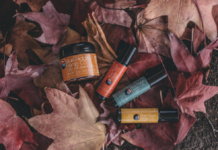A fence can enhance the aesthetic appeal of your property. It’s a desirable feature many buyers look for, so it’s a good investment in resale. And on the practical side, a fence is a terrific way to provide you some privacy and keep your pets inside.
Unfortunately, fences do not require maintenance. Even with easy-care materials, you’ll still need to monitor any indications of problems. Avoid letting minor issues worsen or escalate, leading to costly repairs. In this worst-case situation, you should replace the fence entirely.
In this article, we will discuss some common fence problems.
Rotting Wood
Wooden fences are natural, fit nicely with the surroundings, and are aesthetically attractive. These features all make wooden fences a wise decision for homeowners. But one of the main disadvantages to be mindful of is that they are susceptible to wood rot.
Wood rot happens when moisture is permitted to seep into the wood. Any wooden construction is susceptible to wood rot, but their lower portions are particularly vulnerable because fences are ground-level. Wood rot ultimately causes deterioration and fence failure.
Rot or Insect Damage
Many homeowners mistakenly assume that their entire structure is compromised when they notice only a few boards with rot or insect damage. The boards in question may have less of a seal than the others, attracting insects and decay.
Selecting to remove and rebuild the complete fence is expensive and unnecessary. A superior method is to replace the contaminated or infected boards. You can hire an expert to clean and reseal the wall, stopping rot and pests.
Missing Boards
Depending on the number of missing boards, a fence replacement may be necessary. However, repairing or replacing only the missing boards is much simpler and less expensive, mainly if the main posts are still in place.
Many homeowners worry about the potential blend of new and old boards when numerous boards are missing. However, this is not a significant concern. Wood is a durable material, and if the homeowner chooses the same species for replacement, the fence should blend after cleaning and sealing.
Leaning Fence
A leaning fence is a typical issue homeowners may have with any kind of fence—wood, vinyl, chain link, or aluminum. This can be caused by a weak post that has outlived its useful life. Depending on how severe the lean is, there may be multiple solutions. The issue may be resolved by replacing the faulty post in a single section of the fence. Residential Fence Repair is needed if the faulty post affects the fence.
Corrosion
Corrosion is a common type of fence damage caused due to exposure to acidic solutions, freezing temperatures, and harsh outdoor environments. Metal fence deterioration and weakening over time are caused by chemical reactions between the metal and the surrounding environment.
To prevent corrosion, it is vital to select a corrosion-resistant fence material, such as aluminum, stainless steel, or vinyl-coated steel. Regular upkeep, such as cleaning and painting, can also help.
Installation Issues
The improper fencing installation significantly reduces its lifespan. Common installation faults include boring, shallow post holes, uneven terrain, and excavation near utility lines. Setting up a fence requires long-lasting skill; homeowners should always seek professional advice before installing.
Fences placed on uneven land are more prone to destruction and must be protected with gravel or stones. Additionally, careless excavation may damage the home’s irrigation system, so it’s critical to work with a professional who is aware of modern industry standards.















